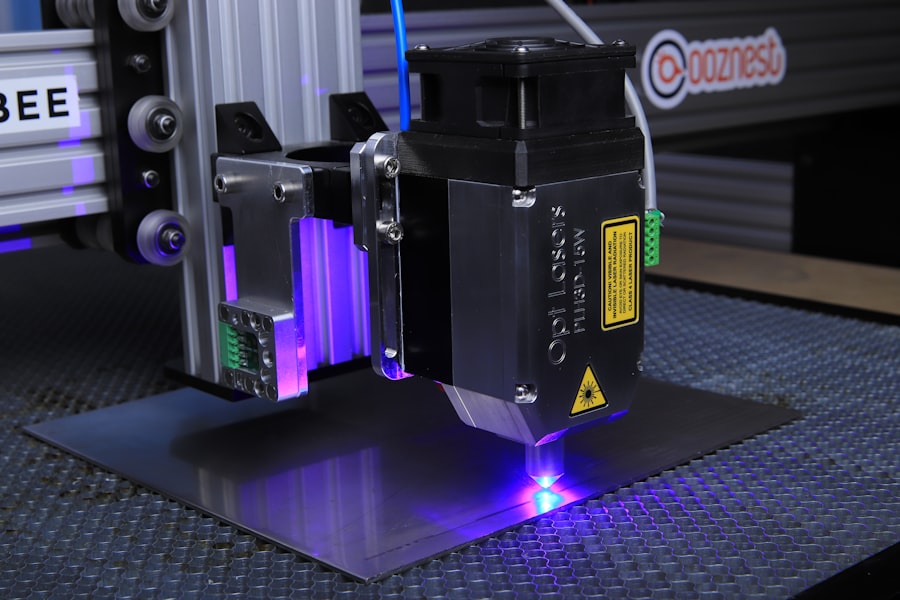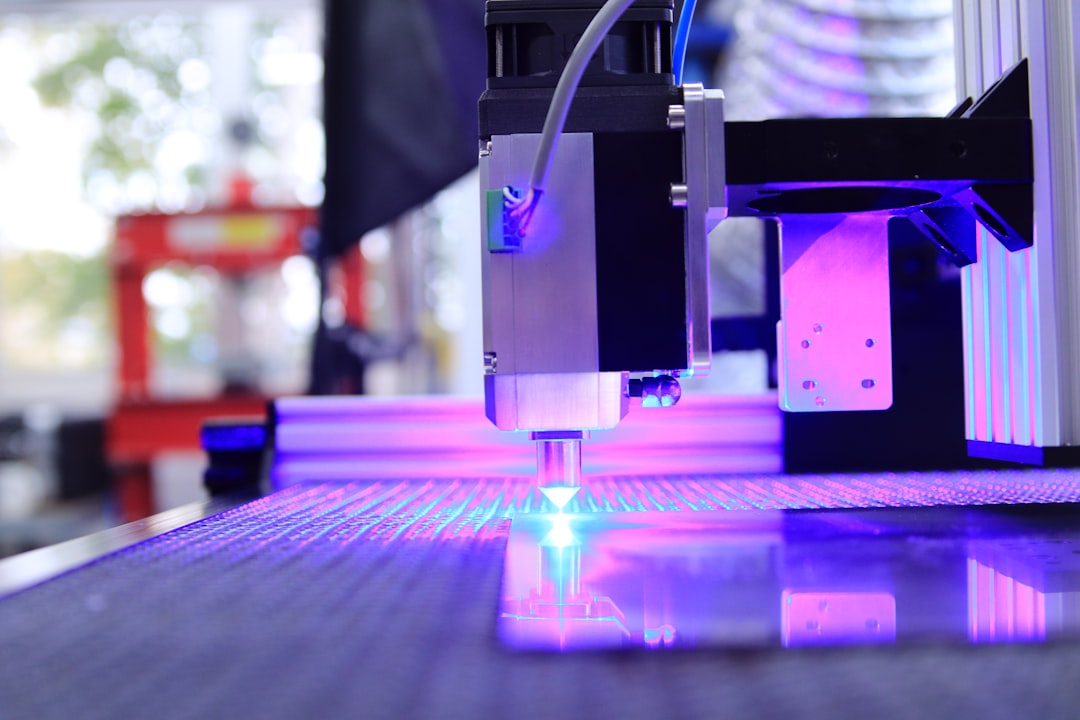Laser therapy, also known as low-level laser therapy (LLLT) or cold laser therapy, is a non-invasive treatment that uses specific wavelengths of light to stimulate healing in the body. The light energy penetrates the skin and is absorbed by the cells, where it promotes cellular regeneration and tissue repair. This process is believed to increase blood flow, reduce inflammation, and stimulate the production of collagen, which is essential for wound healing.
Laser therapy can be delivered through various devices, including handheld lasers, laser combs, and larger units for treating larger areas of the body. The treatment is typically painless and does not require any downtime, making it a popular choice for those seeking alternative or complementary therapies for various health conditions.
Overall, laser therapy is based on the principle of photobiomodulation, which refers to the ability of light to affect biological systems. The specific wavelengths of light used in laser therapy are thought to interact with the body’s cells and tissues, leading to a cascade of beneficial effects. While the exact mechanisms of action are still being studied, there is growing evidence to support the use of laser therapy for a wide range of health issues.
Key Takeaways
- Laser therapy uses focused light to stimulate tissue repair and reduce inflammation
- Laser therapy is generally considered safe when performed by a trained professional
- Research suggests that laser therapy can be effective for pain relief and wound healing
- Common uses of laser therapy include treating musculoskeletal injuries and promoting tissue healing
- Risks and side effects of laser therapy may include burns, skin irritation, and eye injury
Safety of Laser Therapy
When used by trained professionals, laser therapy is considered to be a safe treatment option with minimal risk of adverse effects. The low-level light used in laser therapy does not generate heat or cause tissue damage, making it a gentle and non-invasive approach to healing. Additionally, the targeted nature of laser therapy allows for precise treatment of specific areas without affecting surrounding tissues.
It is important to note that while laser therapy is generally safe, there are certain precautions that should be taken to ensure its safe and effective use. For example, protective eyewear should be worn by both the patient and the practitioner to shield the eyes from direct exposure to the laser light. Additionally, the use of laser therapy may not be suitable for individuals with certain medical conditions or those who are pregnant, so it is important to consult with a healthcare provider before undergoing treatment.
Overall, when performed by qualified professionals and used according to established guidelines, laser therapy is considered to be a safe and well-tolerated treatment option for a variety of health concerns.
Effectiveness of Laser Therapy
The effectiveness of laser therapy has been studied in numerous clinical trials and research studies, with promising results for a wide range of conditions. One of the key benefits of laser therapy is its ability to reduce pain and inflammation, making it a valuable tool for managing musculoskeletal injuries, arthritis, and other painful conditions. Additionally, laser therapy has been shown to promote tissue repair and wound healing, making it useful for treating cuts, burns, and other skin injuries.
In addition to its effects on pain and healing, laser therapy has also been investigated for its potential benefits in other areas of health. For example, some studies have suggested that laser therapy may help improve circulation, reduce swelling, and even stimulate hair growth in individuals with certain types of hair loss. While more research is needed to fully understand the mechanisms of action and potential applications of laser therapy, the existing evidence supports its use as a safe and effective treatment option.
Overall, the growing body of research on laser therapy suggests that it holds promise for addressing a wide range of health concerns, from pain management to tissue repair and beyond.
Common Uses of Laser Therapy
| Common Uses of Laser Therapy |
|---|
| 1. Pain management |
| 2. Wound healing |
| 3. Tissue repair |
| 4. Inflammation reduction |
| 5. Arthritis treatment |
Laser therapy is used in a variety of medical and therapeutic settings to address an array of health issues. One common application of laser therapy is in the treatment of musculoskeletal injuries, such as sprains, strains, and tendonitis. The anti-inflammatory and analgesic effects of laser therapy make it an effective tool for reducing pain and promoting healing in these types of injuries.
In addition to its use in musculoskeletal conditions, laser therapy is also employed in the management of chronic pain conditions, such as arthritis and fibromyalgia. By targeting specific areas of pain and inflammation, laser therapy can provide relief and improve overall quality of life for individuals living with these conditions.
Furthermore, laser therapy has found applications in dermatology for treating skin conditions such as acne, eczema, and psoriasis. The ability of laser therapy to promote tissue repair and reduce inflammation makes it a valuable adjunctive treatment for these types of skin issues.
Overall, the versatility of laser therapy makes it a valuable tool in various medical specialties, offering non-invasive and effective options for addressing a wide range of health concerns.
Risks and Side Effects of Laser Therapy
While laser therapy is generally considered safe and well-tolerated, there are some potential risks and side effects that should be considered. One possible side effect of laser therapy is temporary discomfort or irritation at the site of treatment. This may manifest as redness, swelling, or tenderness, but typically resolves within a short period of time.
In rare cases, more serious side effects such as burns or changes in skin pigmentation may occur if the laser therapy is not administered properly or if the patient has certain risk factors. It is important for individuals considering laser therapy to discuss their medical history and any potential risk factors with a qualified healthcare provider before undergoing treatment.
Additionally, there are certain contraindications for the use of laser therapy, such as pregnancy, active cancer, or use of photosensitizing medications. Individuals with these conditions should exercise caution and seek guidance from a healthcare professional before pursuing laser therapy.
Overall, while the risks and side effects associated with laser therapy are generally minimal, it is important for individuals to be aware of potential complications and seek guidance from qualified professionals when considering this treatment option.
Considerations for Laser Therapy

Before undergoing laser therapy, there are several important considerations that individuals should keep in mind. First and foremost, it is essential to seek treatment from a qualified healthcare provider who has experience in administering laser therapy. This ensures that the treatment is delivered safely and effectively, minimizing the risk of adverse effects.
Additionally, individuals should discuss their medical history and any potential risk factors with their healthcare provider before undergoing laser therapy. This includes disclosing any medications they are taking, as well as any existing medical conditions or concerns that may impact the safety or effectiveness of the treatment.
Finally, individuals should have realistic expectations about the outcomes of laser therapy. While it can be an effective tool for managing pain and promoting healing, it may not provide instant or complete relief for all individuals. Open communication with healthcare providers about treatment goals and expectations can help ensure a positive experience with laser therapy.
Overall, by approaching laser therapy with careful consideration and guidance from qualified professionals, individuals can maximize the potential benefits of this treatment option while minimizing any associated risks.
Is Laser Therapy Safe and Effective?
In conclusion, laser therapy is a non-invasive treatment option that holds promise for addressing a wide range of health concerns. From its ability to reduce pain and inflammation to its capacity for promoting tissue repair and healing, laser therapy offers valuable benefits for individuals seeking alternative or complementary therapies.
When used by trained professionals and according to established guidelines, laser therapy is considered to be safe and well-tolerated with minimal risk of adverse effects. However, it is important for individuals to be aware of potential risks and side effects associated with this treatment option and to seek guidance from qualified healthcare providers before undergoing treatment.
Overall, the growing body of research on laser therapy supports its use as a safe and effective tool for managing pain, promoting healing, and addressing various health issues. By approaching laser therapy with careful consideration and guidance from qualified professionals, individuals can harness its potential benefits while minimizing any associated risks.
If you’re considering laser therapy for hair removal, you may be wondering about its safety and effectiveness. A recent review of the GentleYAG laser for hair removal on darker skin tones provides valuable insights into the safety and efficacy of this treatment. This article discusses the specific considerations for individuals with darker skin tones and offers a comprehensive evaluation of the GentleYAG laser’s performance. For more information on this topic, check out the review of GentleYAG laser hair removal for darker skin tones.
FAQs
What is laser therapy?
Laser therapy, also known as low-level laser therapy (LLLT) or cold laser therapy, is a non-invasive treatment that uses low-level lasers or light-emitting diodes to stimulate healing and reduce pain and inflammation in the body.
Is laser therapy safe?
Yes, laser therapy is considered to be a safe treatment when performed by a trained and qualified healthcare professional. It is non-invasive and does not typically cause any serious side effects. However, it is important to follow the guidelines and recommendations provided by the healthcare professional administering the treatment.
How does laser therapy work?
Laser therapy works by delivering specific wavelengths of light to the targeted area of the body. This light energy is absorbed by the cells, leading to increased cellular activity, improved circulation, and the release of endorphins, which are the body’s natural painkillers. This process helps to reduce inflammation, promote tissue repair, and alleviate pain.
What conditions can laser therapy treat?
Laser therapy is commonly used to treat a variety of musculoskeletal conditions, including arthritis, tendonitis, muscle strains, and joint pain. It is also used for wound healing, nerve pain, and certain skin conditions. However, it is important to consult with a healthcare professional to determine if laser therapy is appropriate for a specific condition.
Will laser therapy work for me?
The effectiveness of laser therapy can vary depending on the individual and the specific condition being treated. While many people experience positive results from laser therapy, it is not guaranteed to work for everyone. It is important to discuss the potential benefits and risks of laser therapy with a healthcare professional to determine if it is a suitable treatment option.





